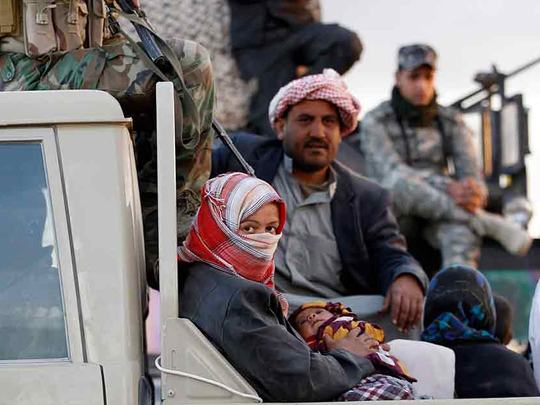
London: Long before the recent push to retake Saddam Hussain’s hometown, the vast majority of Tikrit’s civilians had fled, leaving it vulnerable to destruction but most of its population safe from the fighting. However, if Daesh loses control of the city and Iraqi fighters pursue them north towards Mosul, the two sides will be facing off in areas where many more people are still living in their homes and could be at risk during battles.
“One of our main concerns today concerns what happens once Tikrit has been totally or partially liberated and troops move north,” said Fabio Forgione, Iraq head of mission for MSF. “The city was almost totally depopulated, but to the north of it there are places, such as Hawijah, still hosting high numbers of civilians, and when the fighting moves to these areas, we are concerned about the access that will be granted to humanitarian and international organisations.”
Iraqi forces, led by Shiite militias and backed by the army and Sunni tribal fighters, are currently fighting their way through the booby-trapped streets of Tikrit, which lies around 100 miles north of Baghdad.
“All life had basically ground to a complete halt a few months ago,” said Zaid Al Ali, author of The Struggle for Iraq’s Future, and a frequent visitor to Tikrit before it came under Daesh control.
“You couldn’t live there because there was nowhere to buy food. There were just a few families living in small pockets.”
More than 20,000 soldiers have driven Daesh militants from around half the city, Reuters reported, but they have now paused in their offensive to await reinforcements for the brutal street-to-street battles that will be needed to win full control. Daesh still controls central districts, and a complex of palaces built by Hussain.
The militant group is believed to have spent months creating an elaborate web of up to 180,000 booby traps and IEDs for the forces they expected would try to retake the city.
“We do not need a large number [of reinforcements], just one or two thousand. We need professional personnel and soldiers,” a source in the local military command centre told Reuters.
Air power may also be needed to clear some of the buildings rigged with explosives, Iraqi security expert Hesham Al Hashimi told the agency. As the battle for the centre of Tikrit rages, some families have started returning to outlying districts under the protection of a government security escort.
Nearly two million Iraqis fled their homes last year and are living as internal refugees in other parts of the country, and the government is keen to help them return home where possible. “A lot of people say they prefer to live in a tent in front of their own destroyed house rather than as a refugee,” said Al Ali.
“People have started going back to districts on the east side of the river across from Tikrit.” He is still in touch with friends from the town, and says they are keen to get back. Many are hopeful that they will have homes to return to, despite the heavy fighting.
“So far the city hasn’t been flattened. Some of the buildings have been destroyed by Daesh as reprisal attacks for not having paid protection money, siding with Baghdad or making negative statements about Daesh. Some were destroyed by helicopter bombs.”
Overall, Tikrit has been much better preserved than the Kurdish town of Kobani, where militias backed by US air strikes forced Daesh out but at the cost of the near total destruction of their town. The street battles to come could be much more destructive.
“It doesn’t look anything like Kobani just yet, though it seems the fight might last a while,” said Al Ali.












